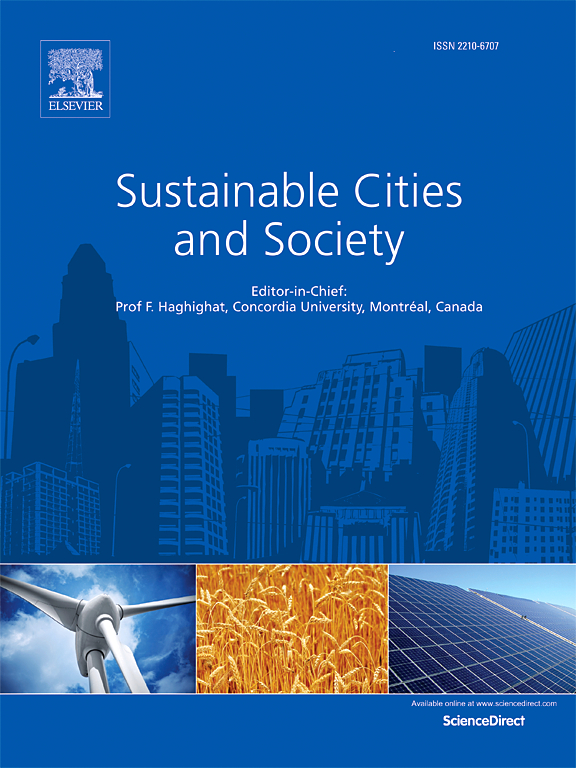Impact mechanisms of 2D and 3D spatial morphologies on urban thermal environment in high-density urban blocks: A case study of Beijing's Core Area
IF 10.5
1区 工程技术
Q1 CONSTRUCTION & BUILDING TECHNOLOGY
引用次数: 0
Abstract
Amid global warming, thermal issues in high-density urban areas have become increasingly severe. This study developed an integrated framework combining artificial neural networks, machine learning, and spatial regression to assess how urban morphology impacts the thermal environment in high-density urban areas. Using 2D and 3D building morphology indicators, we applied self-organizing maps (SOM) to classify urban blocks. Boosted regression trees (BRT) model identified key urban morphology indicators influencing land surface temperature (LST), evaluated their contributions, and analyzed marginal effects. Generalized additive models (GAM) explored nonlinear relationships and threshold effects between LST and morphology metrics, while geographically weighted regression (GWR) captured spatial heterogeneity. Results showed that Dense Low-rise Zone (DLZ) and Dense Mid-rise Zone (DMZ) are predominant in Beijing's core area, with DLZ averaging 50.2 °C, significantly impacting the thermal environment. Building patch density (PD_B) and building number density (BND) are primary indicators affecting LST, with 3D indicators showing the strongest influence. ISF, HRE and POID exhibit significant nonlinear relationships with LST. These findings provide a scientific basis for thermal environment planning and management strategies in high-density urban settings, offering guidance for mitigating urban heat island effects.
求助全文
约1分钟内获得全文
求助全文
来源期刊

Sustainable Cities and Society
Social Sciences-Geography, Planning and Development
CiteScore
22.00
自引率
13.70%
发文量
810
审稿时长
27 days
期刊介绍:
Sustainable Cities and Society (SCS) is an international journal that focuses on fundamental and applied research to promote environmentally sustainable and socially resilient cities. The journal welcomes cross-cutting, multi-disciplinary research in various areas, including:
1. Smart cities and resilient environments;
2. Alternative/clean energy sources, energy distribution, distributed energy generation, and energy demand reduction/management;
3. Monitoring and improving air quality in built environment and cities (e.g., healthy built environment and air quality management);
4. Energy efficient, low/zero carbon, and green buildings/communities;
5. Climate change mitigation and adaptation in urban environments;
6. Green infrastructure and BMPs;
7. Environmental Footprint accounting and management;
8. Urban agriculture and forestry;
9. ICT, smart grid and intelligent infrastructure;
10. Urban design/planning, regulations, legislation, certification, economics, and policy;
11. Social aspects, impacts and resiliency of cities;
12. Behavior monitoring, analysis and change within urban communities;
13. Health monitoring and improvement;
14. Nexus issues related to sustainable cities and societies;
15. Smart city governance;
16. Decision Support Systems for trade-off and uncertainty analysis for improved management of cities and society;
17. Big data, machine learning, and artificial intelligence applications and case studies;
18. Critical infrastructure protection, including security, privacy, forensics, and reliability issues of cyber-physical systems.
19. Water footprint reduction and urban water distribution, harvesting, treatment, reuse and management;
20. Waste reduction and recycling;
21. Wastewater collection, treatment and recycling;
22. Smart, clean and healthy transportation systems and infrastructure;
 求助内容:
求助内容: 应助结果提醒方式:
应助结果提醒方式:


